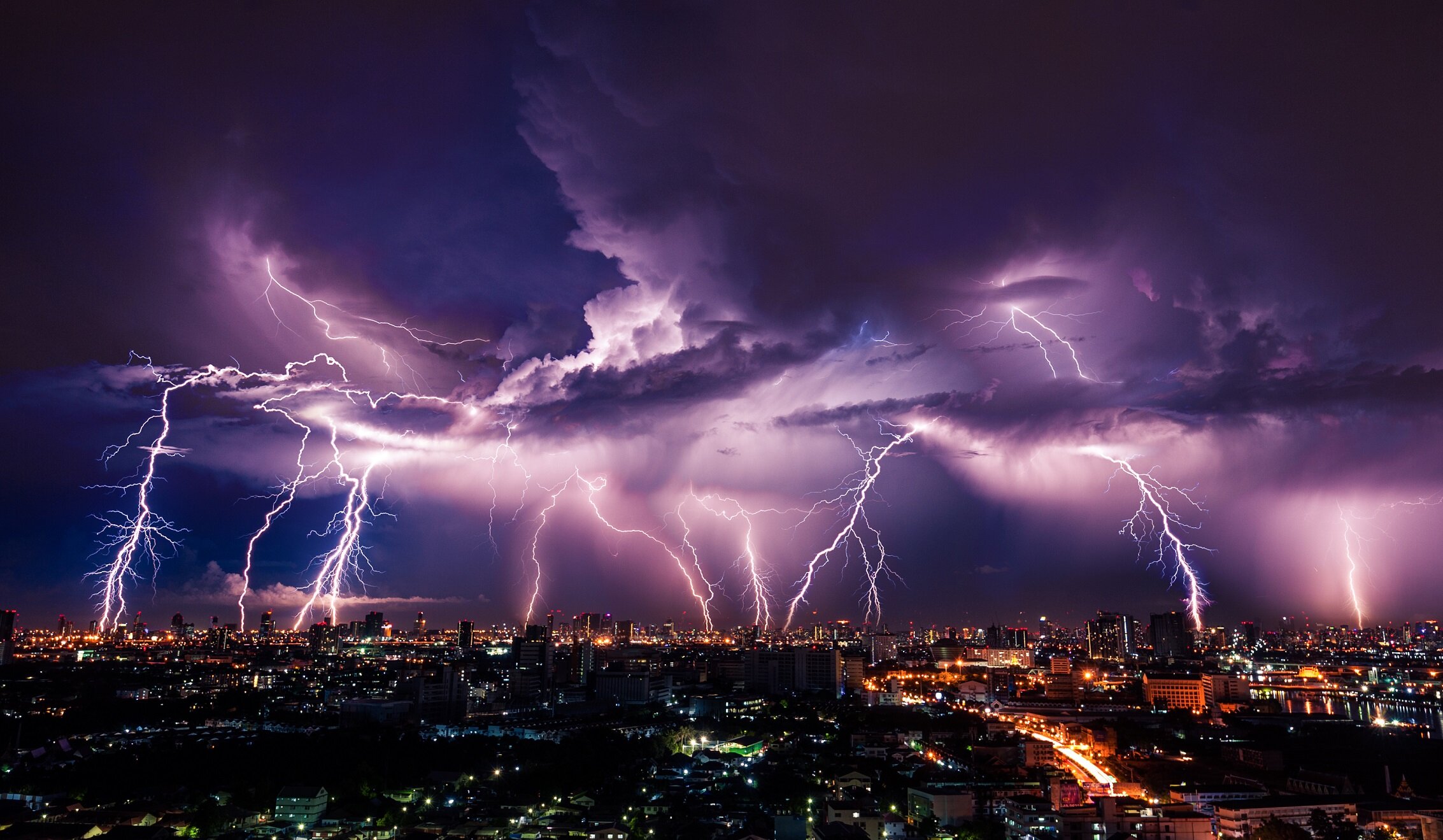Most of us have undoubtedly encountered a thunderstorm before. Thunderstorms are characterized by bright flashes of light followed a few seconds later by a clap of thunder.
It is a beautiful natural phenomenon, but what is actually happening within the clouds when we see a thunderbolt flashing in front of our eyes? How does lightning form?
Image Credit: S. Kuelcue via Shutterstock / HDR tune by Universal-Sci
If you were to look at lightning with a high-speed camera, you would see all kinds of bright branches stemming from the clouds, looking for a way towards the ground. At the moment they hit the ground, a large amount of energy is released; you'll see a bright flash when it happens. On Earth, this happens about 45 times per second on average.
The frequency at which thunderstorms occur is not evenly distributed around the globe. In specific areas, like in Congo and Colombia, thunderstorms occur each and every day. If you encounter a lightning storm when you are out and about, we listed a few handy tips on how to stay safe from lightning.
To understand how lightning is formed, we need to look at the basics. It all starts with charged particles in an electromagnetic field. The air contains electrically neutral molecules (molecules that contain precisely as much positive charge as negative charge).
If we imagine that an electrically neutral molecule gets hit by a hypothetical hammer, a negatively charged particle (electron) may escape. The neutral molecule will lose its equilibrium as we are left with more positively charged particles (ions) than electrons. Electrons are many times lighter than ions, making them a lot easier to move. If this were to happen within an electromagnetic field, a chain reaction could start.
Particles in an electromagnetic field attract each other like magnets. Negatively charged particles are attracted to positively charged particles and vise versa. Ions are heavy and tend to hardly move at all, while electrons are light and tend to accelerate quickly. By moving quickly through the electromagnetic field, electrons can act as the hypothetical hammer described in the situation above and hit other electrically neutral particles, releasing more and more electrons.
When enough positive and negative particles are pulled apart, a so-called charge separation will occur with a positive charge on one side and a negative charge on the other side. When the charge gets large enough, thunderbolts can occur to restore the situation to equilibrium via electrical current. This is effectively what happens in clouds as well; the upper portion of a cloud can become positively charged, and the lower portion negative can become negatively charged.
How does electromagnetic charge occur in clouds?
Several forms of frozen water can be found within clouds; think of ice crystals, hailstones, and snowflakes. These frozen particles tend to collide with each other; ice crystals can, for example, clash with large hailstones.
Oftentimes a little negative charge jumps from the ice crystal to the hailstone during such occasions, leaving us with positively charged ice crystals and negatively charged hailstones.
Image Credit: Frost79 via Shutterstock / HDR tune by Universal-Sci
Why do thunderstorms occur more often during the summer?
In order to create a thunderstorm, one additional element is needed; rising warm air. This is why thunderstorms often occur during warm summer days.
Underneath a cloud, hot air can rise, akin to what happens with a hot air balloon. The updraft of hot air inside a cloud takes the lighter ice crystals up with it while the heavy hailstones tend to drop. Thus, the positively charged ice crystals end up at the top of the cloud, while the negatively charged hailstones drop to the bottom. So effectively, we are now dealing with charge separation akin to our example above.
In the real world, the distance between these differently charged fields can become several kilometers. The voltages associated with this phenomenon can reach billions of volts. To put this in perspective, a typical power socket uses 110 to 230 volts, millions of times less than the voltages associated with thunderstorms.
As we explained, negatively charged particles and positively charged particles attract each other, and nature likes to resolve imbalances. The resulting current gets released in the form of a thunderbolt. The light we observe is derived from the collisions of molecules.
Why does lightning strike the ground?
But the charge separation occurred within the cloud, not outside of it. So why does lightning strike the ground?
Interestingly, 90% of lightning discharges occur within clouds. Most of the time, we don't see or hear them at all. The remaining 10% are the ones that reach the ground.
Image Credit: Wirestock Creators via Shutterstock / HDR tune by Universal-Sci
So why does 10% of lightning hit the ground? The bottom of the cloud is negatively charged. This negative charge naturally wants to be released. The ground contains almost infinite negative and positive particles and can sometimes attract the negative charge from the cloud towards the Earth via a thunderbolt.
These are the basic principles of lightning. A lot of details still remain unknown to scientists. For example: what released that very first electron? One of the main theories regarding this question is that this happens through interaction with cosmic radiation. A particle stemming from the far reaches of space hits an air molecule within a cloud and releases the first electron, starting a chain reaction.
All in all, the ultimate answer to what causes lighting could well be a particle from outer space.
Sources and further reading:
Lightning Basics (The National Severe Storms Laboratory)
Universiteit van Nederland (Phycisists Sander Nijdam, Associate proffesor at Eindhoven University of Technology)
Banner image credit: Vasin Lee via Shutterstock
FEATURED ARTICLES:
If you enjoy our selection of content, consider subscribing to our newsletter (Universal-Sci Weekly)













